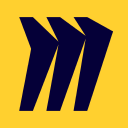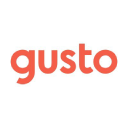How Two College Friends Started A $25K/Month On-Demand Development Business
Note: This business is no longer running. It was started in 2022 and ended in 2023. Reason for closure: Shut down.
Hello! Who are you and what business did you start?
My name is Neil Granberry and I am the co-founder of Cottage Software alongside my friend, Hunter Hodnett, who founded the business. Cottage helps web designers and developers turn designs into code fast and affordably via a tech platform powered by learning developers.
We get Figma designs from clients and turn them into coding competitions so that our platform of 100+ learning developers can compete to build the best React components.
Right now we’re making $25,000 per month as a tech-enabled agency of just two people. Our success is proving our product’s value as we begin to sell the product directly to web design and development agencies.
What's your backstory and how did you come up with the idea?
February: First contact since our undergrad days at Auburn, circa 2014


Download the report and join our email newsletter packed with business ideas and money-making opportunities, backed by real-life case studies.

Download the report and join our email newsletter packed with business ideas and money-making opportunities, backed by real-life case studies.

Download the report and join our email newsletter packed with business ideas and money-making opportunities, backed by real-life case studies.

Download the report and join our email newsletter packed with business ideas and money-making opportunities, backed by real-life case studies.

Download the report and join our email newsletter packed with business ideas and money-making opportunities, backed by real-life case studies.

Download the report and join our email newsletter packed with business ideas and money-making opportunities, backed by real-life case studies.

Download the report and join our email newsletter packed with business ideas and money-making opportunities, backed by real-life case studies.

Download the report and join our email newsletter packed with business ideas and money-making opportunities, backed by real-life case studies.





















